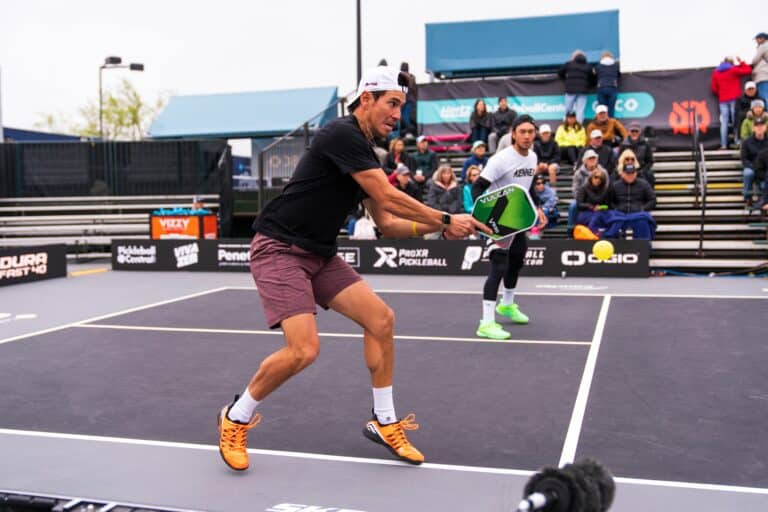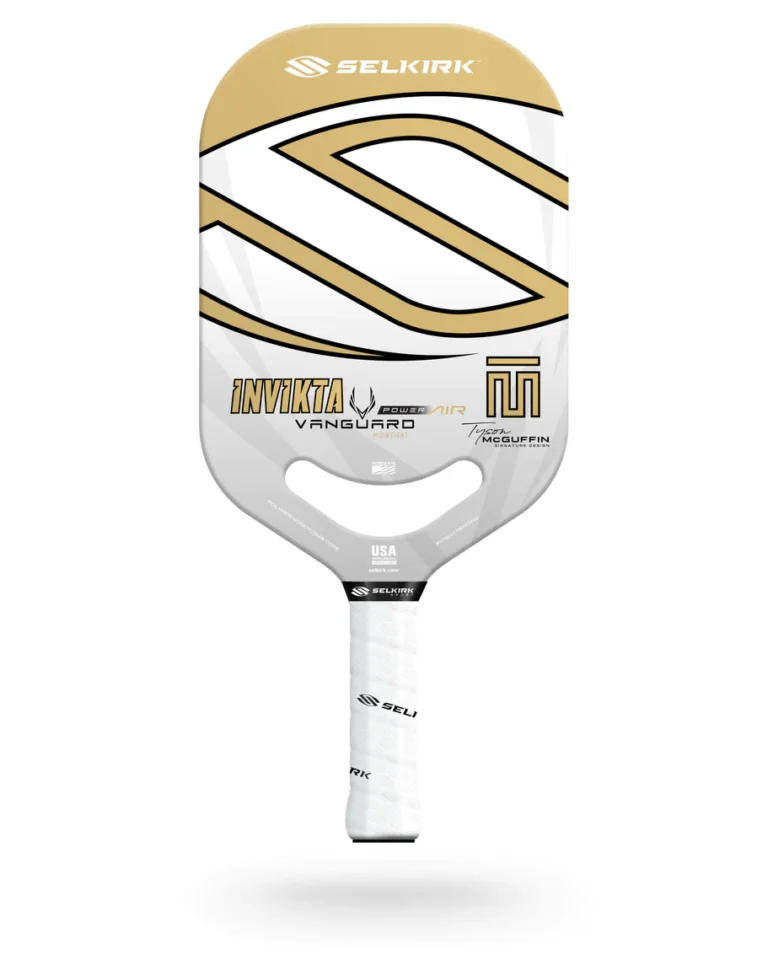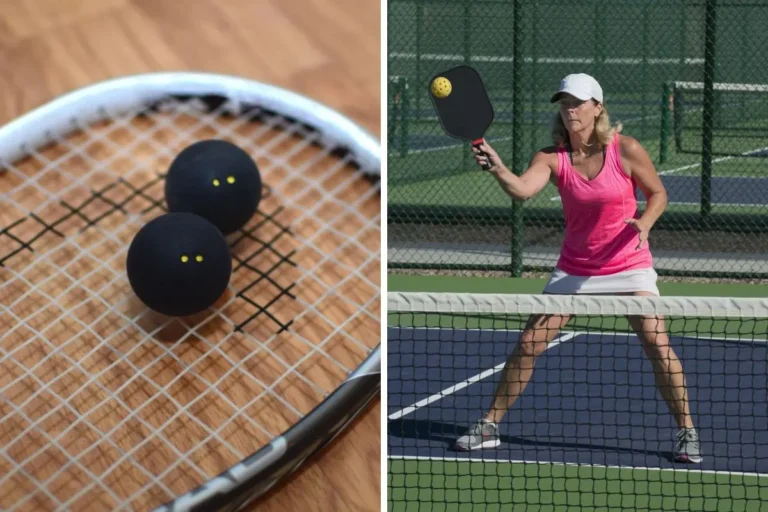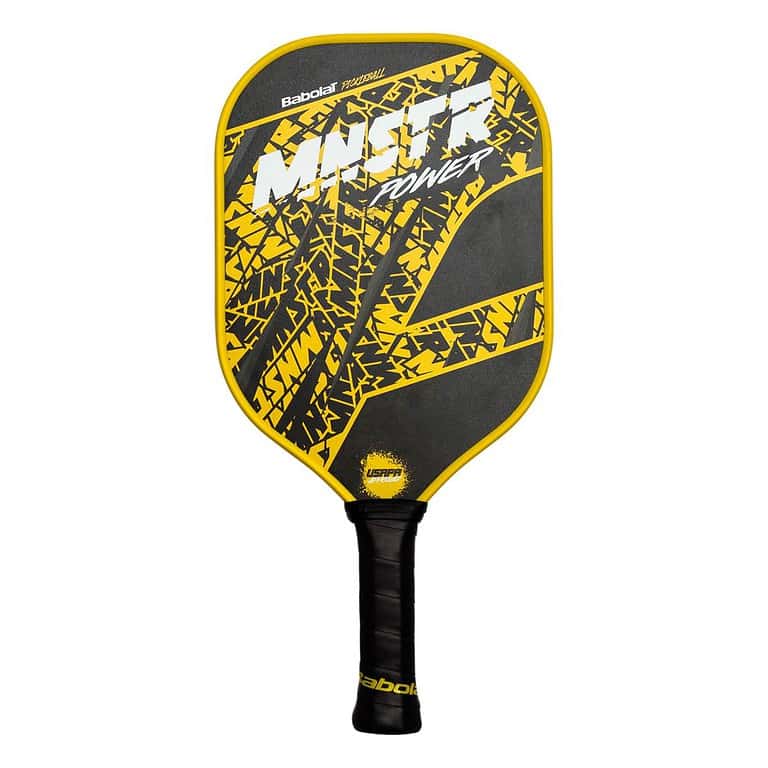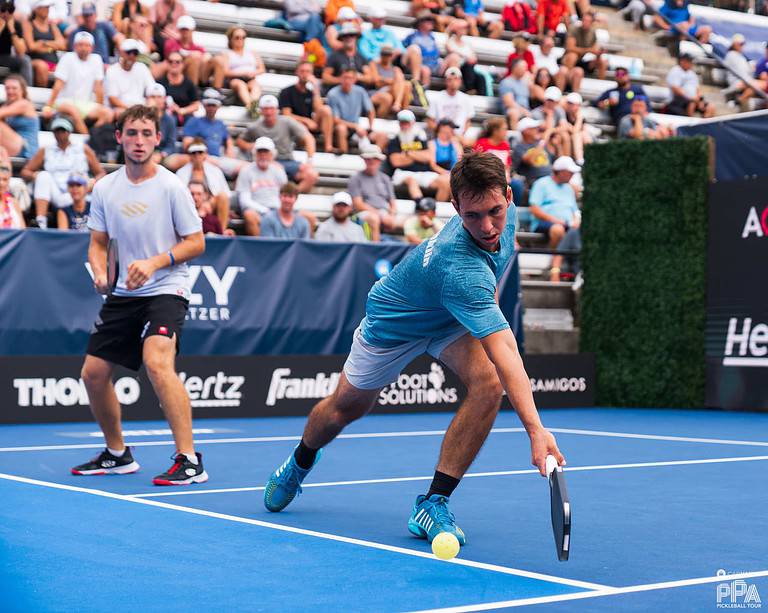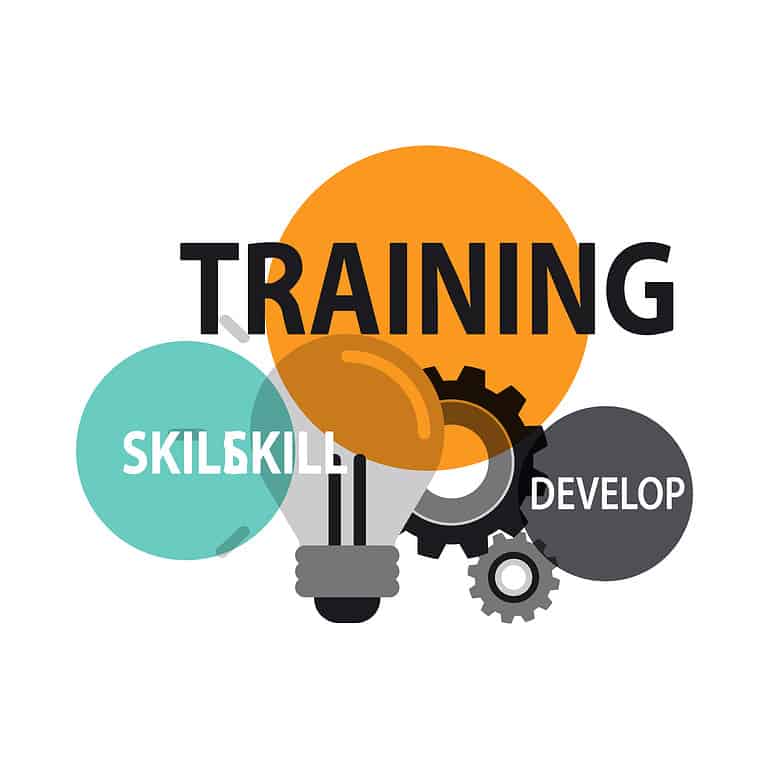6 Significant Pickleball Rule Changes For 2023
The United States of America Pickleball Association (USAPA) announced seven new pickleball rule changes for the 2023 season. The changes make the game fairer, consistent, and enjoyable for all players.
What Are the Pickleball Rule Changes For 2023?
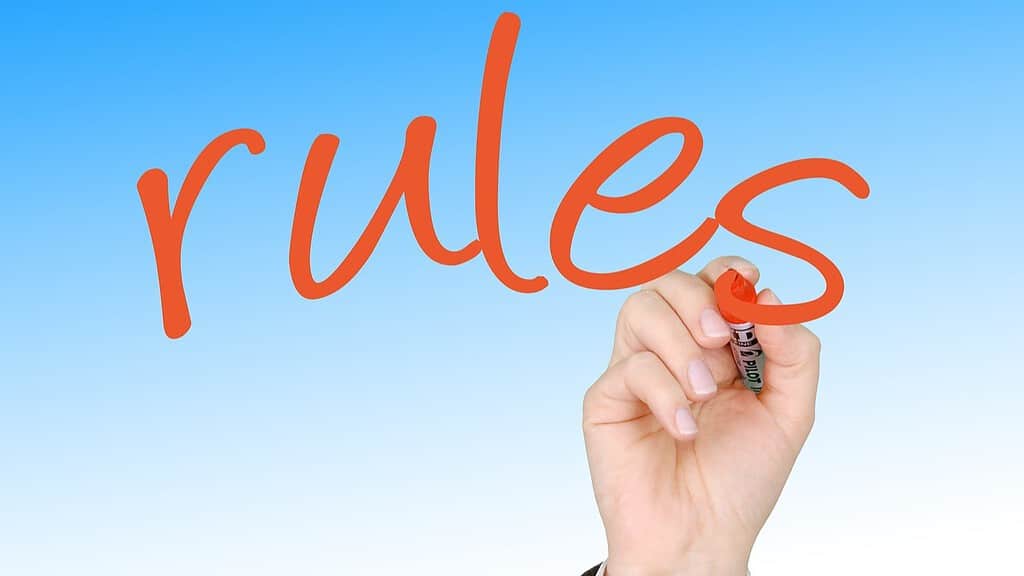
No More Spin Serve:
The one-handed spin serve is now prohibited!! The server can no longer impart any spin on the ball immediately before the serve. This change was made because the spin serve gave some players an unfair advantage.
The spin made it difficult for opponents to return the serve and made it easier for servers to hit winners.
Rule: 4.A.5 Manipulating the ball to add spin during the release of the ball is not allowed. Some natural rotation of the ball when it is released is allowable but the server must not impart manipulation or spin prior to striking the ball to serve. This applies to the volley serve and the drop serve.
Players Can Stop Play to Correct A Wrong Score:
In 2022, the pickleball rules were changed to prevent players from stopping play after the service due to a wrong score being called. However, this pickleball rule has been changed back to 2023.
The player may now stop play after the serve but before the return of the serve to correct the score. This change was made because it was felt that the previous pickleball rule was too restrictive. Players should be able to correct a wrong score without being penalized.
Rule 4.K If the wrong score is called, the referee or any player may stop play before the return of serve to correct the score. It is a fault to stop play after the return of serve to identify or ask for a score correction. It is a fault to stop play to identify or ask for a score correction when the score was correctly called.
Players Should Avoid Wearing Clothing That Matches The Ball Color:
A new pickleball rule was added for 2023. This is about your clothing. This is to avoid any potential for distraction or confusion. If a player wears clothing that closely matches the ball’s color, it could make it difficult for opponents to see the ball. This could lead to errors and could also make the game less enjoyable.
Rule 2.G.1/2.G.4 Inappropriate apparel may now include apparel that approximates the color of the tournament ball. Section 1 encourages players to avoid wearing apparel that approximates the color of the ball. The Tournament Director retains the right to require an apparel change during a non-chargeable time-out.
Wrong Score Called:
You can ask for a score correction before the return of serve. Once the return of serve has been executed it is a ‘fault’ to stop play to correct the score.
Rule 4.K If the wrong score is called, the referee or any player may stop play before the return of serve to correct the score. It is a fault to stop play after the return of serve to identify or ask for a score correction. It is a fault to stop play to identify or ask for a score correction when the score was correctly called.
Equipment Time Out:
You no longer have to use a regular-time-out if you need an equipment adjustment to maintain safe play.
Rule 10.D Players are not required to use a regular time-out for equipment adjustments or changes necessary for fair and safe continuation of the match. The referee will call an equipment time-out of a reasonable duration.
Player Questions about Correct Server, Receiver or Position
Before the serve is hit, you can ask the referee if it is an officiated game, or your opponents; if it is not, if you are in the right position. Both must answer with the appropriate information.
Rule 4.B.8 Player questions about correct server, receiver or position remain allowed before the serve is hit. A generic question by the server such as “Am I good?” is considered to encapsulate both the correct server question and the correct position question, and the referee will answer both questions. In non-officiated play, a player may ask the opponent the same questions and the opponent must respond with the appropriate information.
Replay Or Fault On The Serve
The referee can immediately stop play and call for a replay if they don’t think that a good serve was executed. They can call a fault if the server violates any of the serve rules. Examples include, hitting the ball above waist height and putting illegal spin on the ball.
Rule 4.A.6/4.A.9 The referee has the authority to immediately stop play and order a replay if the referee is not certain that one more required elements of a serve have been met. The referee will call an immediate fault if a serve clearly violates one or more of the requirements. The intent is to induce players to adjust their serve so that it clearly and obviously meets all requirements.
| OFFICIATED PLAY | NON-OFFICIATED PLAY | ||
| Referee not certain of violation | Referee certain of violation | Receiver determines violation | |
| VOLLEY SERVE | |||
| 4.A.7.a. No upward arc | Replay | Fault | None |
| 4.A.7.b. Paddle head above wrist | Replay | Fault | None |
| 4.A.7.c. Contact above waist | Replay | Fault | None |
| 4.A.5. Spin imparted | Replay | Fault | Replay |
| 4.A.6. Release not visible | Replay | Replay | Replay |
| DROP SERVE | |||
| 4.A.8.a. Drop not made with one hand only or from paddle face or not from unaided height | Replay | Fault | None |
| 4.A.8.b. Ball propelled up or down | Replay | Fault | None |
| 4.A.5. Spin imparted | Replay | Fault | Replay |
| 4.A.6. Release not visible | Replay | Replay | Replay |
Why Were The Pickleball Rules Changed In 2023?
- Improve fairness. The spin serve was giving some players an unfair advantage, so it was prohibited. The net height was raised to make it more difficult for servers to hit winners with high-bouncing serves. The non-volley zone was extended to give players more time to react to serves.
- Promote sportsmanship. Players should respect the decisions of their opponents, and they should not argue or dispute calls.
- Improve safety. Players should avoid wearing clothing that closely matches the ball color, as this could lead to errors and injuries.
- Make the game more enjoyable. The changes to the rules are designed to make the game more challenging and competitive for all players.
Who Sets The Rules For Pickleball?
The pickleball rules are set by the United States of America Pickleball Association (USAPA). This is the governing body for pickleball in the United States. It was founded in 1998 and has grown to become the largest pickleball organization in the world. The USAPA sets the rules for pickleball, sanctions tournaments, and provides resources for players and coaches.
The USAPA’s rules committee is responsible for updating the pickleball rules. The committee meets regularly to discuss changes to the pickleball rules and to make recommendations to the USAPA board of directors. The board then votes on whether or not to adopt the changes.
The USAPA’s rules are designed to be fair, consistent, and easy to understand. They are also designed to promote the growth of pickleball and to make the game more enjoyable for all players.
Where Can You Find A Complete List Of The Rules?

The complete list of pickleball rules can be found on the USAPA website. The pickleball rules are divided into sections, each of which covers a different aspect of the game. The sections1 include:
- General Rules: These rules cover the basic rules of the game, such as the size of the court, the scoring system, and the equipment used.
- Serve: These rules cover the serve, including the proper technique, the foot fault, and the let serve.
- Volley: These rules cover the volley, including the volley zone, the volley serve, and the drop volley.
- Groundstroke: These rules cover the groundstroke, including the proper technique, the return of serve, and the passing shot.
- Net Play: These rules cover net play, including the drop shot, the dink, and the volley.
- Special Situations: These rules cover special situations, such as the let cord, the ball out of bounds, and the net cord.
- Equipment: These rules cover the equipment used in pickleball, such as the paddle, the ball, and the court. This is becoming more a factor as new technologies are introduced.
The pickleball rules are also available as a PDF document. The PDF document is a convenient way to print out the pickleball rules and take them with you to the court.
The USAPA website also has a number of resources for players, including:
- Rules Tutorial: This tutorial provides a video overview of the rules of pickleball.
- Rules Quiz: This quiz tests your knowledge of the rules of pickleball.
- Rules Forum: This forum is a place to ask questions about the rules of pickleball and to get answers from other players and coaches.
The USAPA is committed to providing players with the resources they need to learn the rules of pickleball and to play the game correctly.
What Is The Frequency of Pickleball Rules Changes?
The USAPA updates the rules of pickleball on an as-needed basis. The rules committee meets regularly to discuss changes to the rules and to make recommendations to the USAPA board of directors. The board then votes on whether or not to adopt the changes.
What Is The Process For Changing The Pickleball Rules?
The process for deciding rule changes in pickleball is as follows:
- Proposal: Any player, coach, or member of the USAPA can propose a rule change.
- Review: The USAPA’s rules committee reviews the proposed rule change and makes a recommendation to the USAPA board of directors.
- Vote: The USAPA board of directors votes on whether to adopt the proposed rule change.
- Implementation: If the proposed rule change is adopted, it is implemented in the next version of the USAPA rulebook.
The USAPA’s rules committee is made up of experienced pickleball players, coaches, and referees. The committee meets regularly to discuss proposed rule changes and to make recommendations to the USAPA board of directors. The board is made up of officials who are elected and represent all interests of the USAPA’s membership.
The process for deciding pickleball rule changes is designed to ensure that all stakeholders have a voice in the process. It also ensures that rule changes are made in a fair and transparent manner.
What Are Factors The USAPA Considers When Making Pickleball Rule Changes?
- Fairness: The USAPA wants to ensure that the rules are fair for all players, regardless of their skill level.
- Consistency: The USAPA wants to ensure that the rules are consistent across all levels of play.
- Clarity: The USAPA wants to ensure that the rules are easy to understand.
- Simplicity: The USAPA wants to avoid making the rules too complex.
- Tradition: The USAPA wants to respect the traditions of the game.
- Growth: The USAPA wants to ensure that the rules do not stifle the growth of the game.
The USAPA is committed to making the rules of pickleball fair, consistent, easy to understand, and enjoyable for all players.
What Is the Impact To The Game?
All of these rules will have a major impact on the game.
The elimination of the spin serve is a major change and I think makes the game more competitive and skills based. I have seen tournaments where players have literally aced their opponents on service as many as 20-30 consecutive times.
The pickleball rule change for let serve is interesting. I think most of us were grateful when the ball hit the net but still fell outside the non volley zone and allowed the serve to be good. I am torn on the extending the kitchen out 3 feet. I am not sure why this was necessary. It seems to me this will favor bangers or those with hard drive shots and returns.
The transition of tennis players to pickleball is transforming the game in multiple ways. Not only are these players bringing their power and speed to the sport, but their influence is also leading to rule adaptations. As a result, pickleball rules are evolving to accommodate this shift, ensuring that the sport remains exciting and inclusive for players of all backgrounds.
Happy Pickling!

